
ARA Taps Coolbaugh as Ohmsett Facility Manager
to training. He holds a Bachelor of Arts and a PhD in Chemistry, as well as a Master of Science in the Management of Technology. “We are excited to have Tom join our team” said ARA Vice President Doug Meegan. “He brings 30-plus years of experience in chemical technology and oil spill research, and is a welcome addition to our company. Tom’s extensive background will help expand the testing and measurement capabilities of Ohmsett through innovation and pursuing upgrades to the facility that benefit the research and training community.”Ohmsett is a national research asset
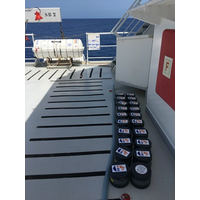
Drifter Buoys Aid Seaweed Research
the North Equatorial Recirculation Region (NERR) in the summer of 2019.Most surface ocean research projects use bulky 10-meter-deep drifters but when the Dutch research team heard about how Nico Wienders at the Florida State University used tiny SPOT Trace satellite trackers for oceanographic and oil spill research, they realized this was a more realistic option to mimic the drift of Sargassum on the surface of the sea.The buoys are made out of a 15cm PVC pipe which floats about 1cm above the sea. Each buoy is fitted with a tiny (7 x 5cm) SPOT Trace device which features an integrated GPS receiver, simplex
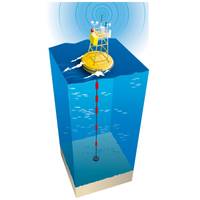
NATO Uses IoT to Study the Oceans
di Scienze Marine” of the Italian National Research Council use SPOT Trace to study surface currents in the Mediterranean and the University of Miami Rosenstiel School of Marine and Atmospheric Science has used large quantities of SPOT Trace satellite trackers also for oceanographic and oil spill research
Globalstar Satellite Technology to Combat North Sea Pollution
to buoys and the tracking data gives researchers and crews in training a better understanding of how an oil spill spreads. In April 2017, Globalstar announced that the University of Miami Rosenstiel School of Marine and Atmospheric Science deployed 550 SPOT Trace satellite trackers, also for oil spill research.
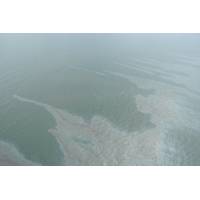
TechSurge: Advancing Oil Spill Research
for the next oil spill. Included with this program is a free three-part webinar series, which is centered around the full-day TechSurge program and designed to increase your understanding of the impacts petroleum pollution on conditions found in the Gulf of Mexico. The TechSurge on advancing oil spill research will include panels and discussions held by world renowned professionals on the subject. Topics to be discussed will include: Hydrocarbon detection technologies Modeling and prediction of where oil will go during a spill Mitigation strategies Impacts to an ecosystem after
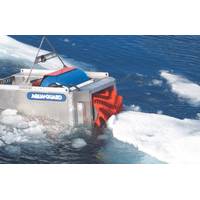
'Roomba' in the Arctic
The pace and quality of oil spill research in the United States typically ebbs and flows as a function of two, if not three important variables. First, after the 1989 Exxon Valdez grounding, there was a flurry of activity to ramp up oil spill research because it had been dormant for so long. The need was recognized, with plenty of money made available. Primarily, this research centered on conventional spill remediation techniques – for example, a tanker or barge spilling oil – and not much else. Predictably, when memory of the spill faded, so did interest in research and funding. &nbs
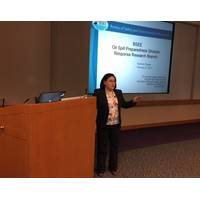
Oil Spill Research to Measure Dispersant Effectiveness
Highlighting research projects funded by the Bureau of Safety and Environmental Enforcement (BSEE), engineer Suzanne Chang discussed 13 recently completed and ongoing studies Tuesday at the Seventh Technology Workshop for Oil Spill Response. Chang described one study that seeks to, “develop a novel ultrasonic scatter method to measure the droplet size of dispersed oil to monitor the efficacy of dispersant application.” Chang explained that, “acoustic signals respond to changes in oil droplet sizes.” The ultimate goal of the research is to develop a way to measure the

MTR100: Ohmsett
Managed by the U.S. Department of Interior’s Bureau of Safety and Environmental Enforcement’s (BSEE), Ohmsett – The National Oil Spill Response Research and Renewable Energy Test Facility is part of its oil spill research program ensuring the best and safest oil spill detection, containment and removal technologies are available to protect the U.S. coastal and ocean environments. The facility is maintained by MAR (MD) LLC through a contract with BSEE. At Ohmsett, research and testing is conducted in a realistic setting to produce the most accurate and reliable results generally
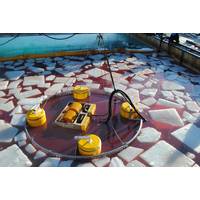
MTR100: Ohmsett
oil spill response equipment research, testing, and training can be conducted in a marine environment with oil under controlled environmental conditions. Managed by the U.S. Department of Interior’s Bureau of Safety and Environmental Enforcement’s (BSEE), Ohmsett is part of its oil spill research program ensuring the best and safest oil spill detection, containment and removal technologies are available to protect the U.S. coastal and ocean environments. The facility is maintained by MAR, Inc. through a contract with BSEE. The facility has the capability to test and evaluate oil spill


 February 2025
February 2025





